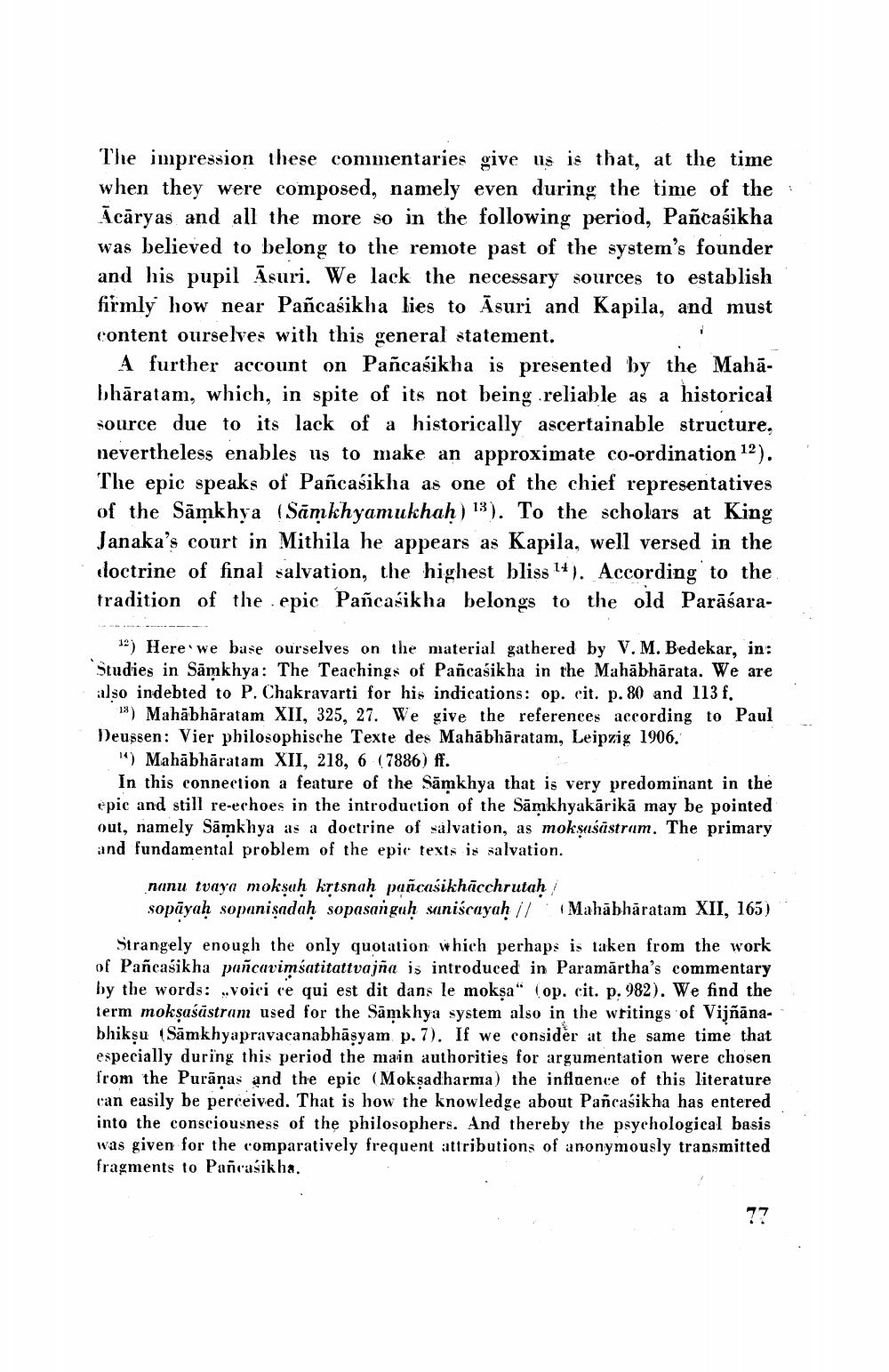________________
The impression these commentaries give us is that, at the time when they were composed, namely even during the time of the Ācāryas and all the more so in the following period, Pancasikha was believed to belong to the remote past of the system's founder and his pupil Asuri. We lack the necessary sources to establish firmly how near Pañcasikha lies to Āsuri and Kapila, and must content ourselves with this general statement.
A further account on Pancabikha is presented by the Mahabhāratam, which, in spite of its not being reliable as a historical source due to its lack of a historically ascertainable structure, nevertheless enables us to make an approximate co-ordination 12). The epic speaks of Pancasikha as one of the chief representatives of the Sāņkhya (Sāmkhyamukhaḥ) 13). To the scholars at King Janaka's court in Mithila he appears as Kapila, well versed in the doctrine of final salvation, the highest bliss 14). According to the tradition of the epic Pañcasikha belongs to the old Parāśara
*) Here we base ourselves on the material gathered by V.M. Bedekar, in: Studies in Samkhya: The Teachings of Pancasikha in the Mahābhārata. We are also indebted to P. Chakravarti for his indications: op. cit. p. 80 and 113 f.
13) Mahābhāratam XII, 325, 27. We give the references according to Paul Deussen: Vier philosophische Texte des Mahābhāratam, Leipzig 1906.
") Mahābhāratam XII, 218, 6 (7886) ff.
In this connection a feature of the Sāmkhya that is very predominant in the epic and still re-echoes in the introduction of the Samkhyakārikā may be pointed out, namely Sāmkhya as a doctrine of salvation, as moksasõstram. The primary and fundamental problem of the epic texts is salvation.
nanu tvaya mokşah krtsnah pañcasikhācchrutah / sopāyah sopanisadah sopasanguh saniścayah // Mahābhāratam XII, 165)
Strangely enough the only quotation which perhaps is taken from the work of Pancasikha pañcaviņsatitattvajña is introduced in Paramārtha's commentary by the words: voici ce qui est dit dans le mokşa“ (op. cit. p. 982). We find the term moksaśāstram used for the Sāmkhya system also in the writings of Vijñānabhiksu (Samkhyapravacanabhāsyam p. 7). If we consider at the same time that especially during this period the main authorities for argumentation were chosen from the Purānas and the epic (Mokşadharma) the influence of this literature can easily be perceived. That is how the knowledge about Pancasikha has entered into the consciousness of the philosophers. And thereby the psychological basis was given for the comparatively frequent attributions of anonymously transmitted fragments to Pancasikha.




